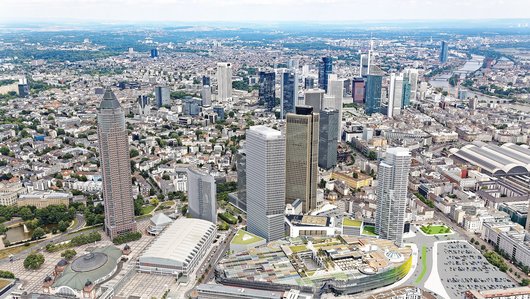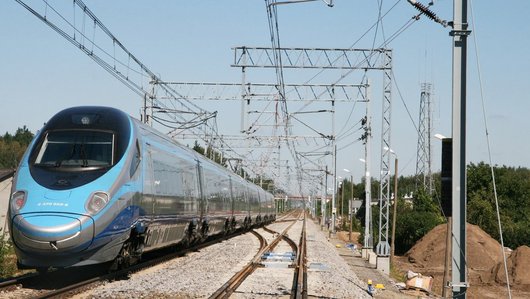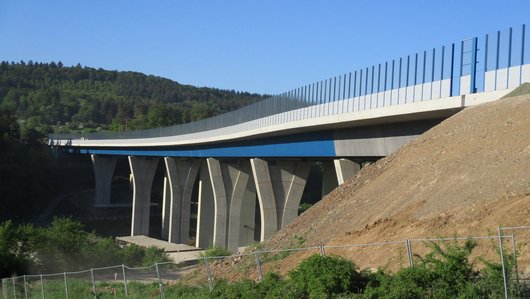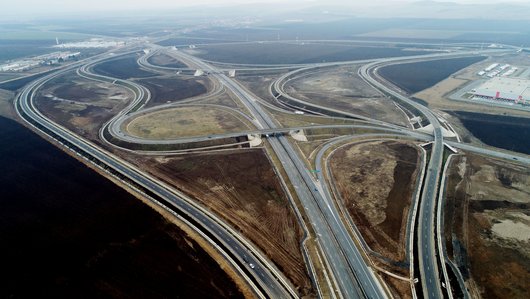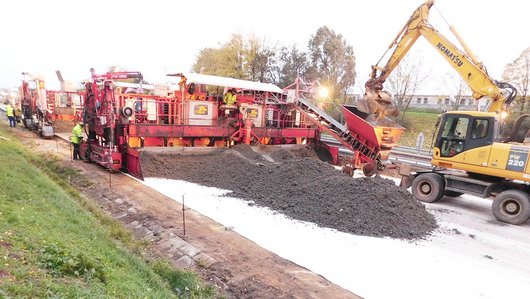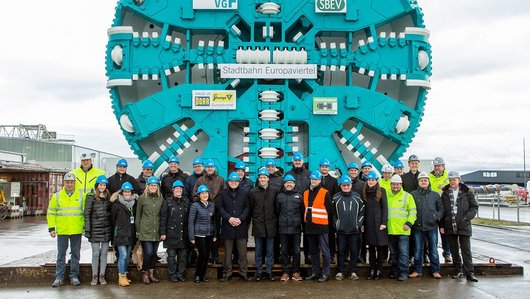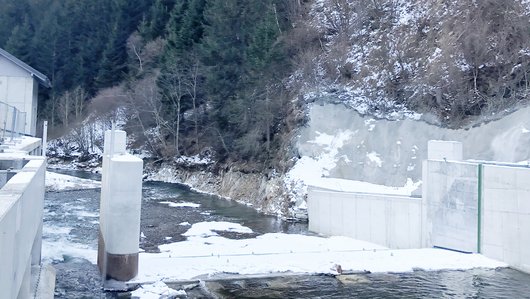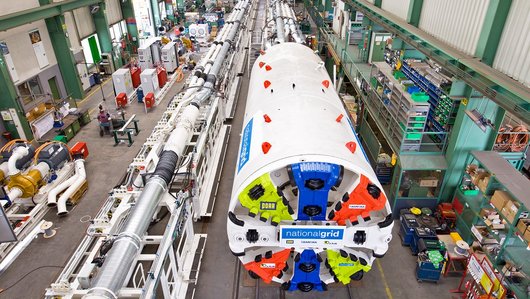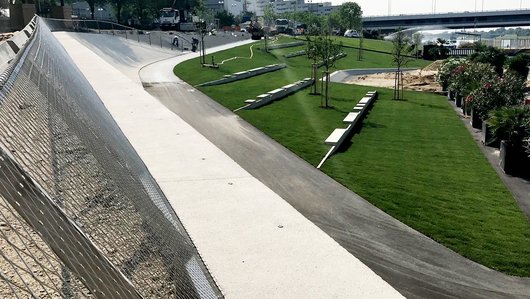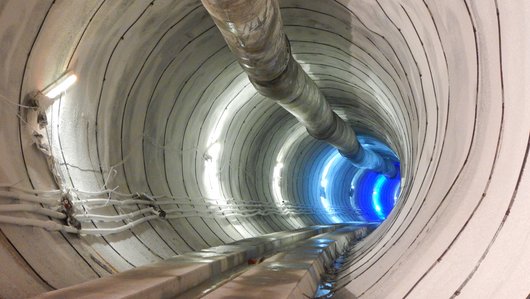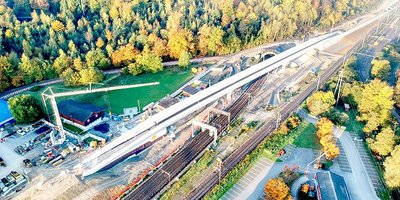
Dorfnest at Kloten overpass
PORR SUISSE AG is implementing a new overpass construction scheme in Dorfnest at Kloten on one of the most heavily-trafficked railway lines in Switzerland.
The project also includes the expansion to two lanes of the Kloten-Dorfnest line over a distance of 1.6km. These measures will result in more trains being able to travel along the Bassersdorf-Airport and Bassersdorf-Kloten lines.
-
EmployerSchweizerische Bundesbahnen SBB
-
ContractorPORR SUISSE AG
-
Project typeCivil engineering, Infrastructure, Structural engineering
-
Project scopeBridge construction, specialist civil engineering, railway works, earthworks, roadway construction, general civil engineering
-
Order volumeEUR 25 million
-
Construction start02/2016
-
Construction end08/2018
General
The Zurich-Winterthur corridor is one of the most heavily-travelled in Switzerland with around 550 trains per day. Part of the reason for this is the Zurich airport destination. The steady increase in passenger numbers required additional services, and so the SSB and Zurich Traffic Union (ZVV) are now implementing the necessary expansion. It is also a salient point that crossing conflicts currently occur at the Dorfnest branch point between Kloten and Bassersdorf. From 2020 on, up to 670 trains per day should be able to travel the inter-city line. To increase the capacity of the lines within the corridor, and to ensure the corresponding reliability of the rail schedule for the new service, numerous infrastructural measures have been implemented. The "Future Developments in Rail Infrastructure" (ZEB) project is seeing more and more key projects being realised across Switzerland.
The contract for the Dorfnest overpass project in the Kloten area was successfully landed by PORR SUISSE AG in autumn 2015. Within the framework of the 25 million-euro contract, PORR completed an approximately 250m-long pre-stressed concrete bridge over the airport line, at what had until then been a cross-intersection. These measures will dispense with wait times at the intersection. Moreover, the SBB is expanding the Kloten-Dorfnest line to a double track along a stretch of around 1.6km and reducing signal intervals between Zurich airport and Effretikon. This will enable trains to pass with greater flexibility and frequency. Works commenced in February 2016 and will be completed in late summer 2018. The new schedule is expected to be introduced for December 2018, when the new construction will be put into operation.
All works were completed without interruption to the regular rail traffic.
Efficient alternative
According to the call for tenders, the rail bridge was to be constructed with an "overhead falsework". This refers to an auxiliary construction which is installed during bridge construction works, which significantly limits the free space underneath the new bridge. The concrete formwork for this is suspended from suspension rods and then the bridge superstructure is installed. This solution requires an intermediate stage above the two columns and short edge stages. The intermediate supports can only be completed after tensioning of the whole bridge structure. As an efficient alternative, PORR recommended a "conventional, underlying rolled girder support with integrated protective tunnel" - a suggestion with which the client agreed. With this variation, no intermediate support is necessary between the platforms and no additional protective tunnel is required. The formwork, reinforcing and concreting works can be carried out "conventionally" with tower cranes. The entire construction process was to be overseen closely with a view to quality and schedule.
Extensive preliminary and main efforts
Numerous preparatory and accompanying measures were necessary for the implementation of the overpass construction scheme together with the two-track expansion. For one thing, closure of the platforms was essential. In the normal course of events, such closures would last for five hours at a stretch. For the assembly and disassembly of the protective tunnel and falsework, total closures of both platforms were announced. Another factor was the particular attention paid to the safety of all participants. To ensure this, slow traffic lanes were established on the construction site and extensive constructional safety measures such as protective fencing barricades along the platforms, protective scaffolding around the crane, a protective tunnel around the falsework and platform security measures were put in place.
A new 600m-long access road to the overpass construction was created. In addition, a line for the movement of the more than 50t drilling apparatus was established, primarily with an earth support shell made from hanging material prepared on-site, and the 175 drill piles with a diameter of 1,000mm were drilled out along this line, with piping. After the gradual excavation of the bored piles, the 350m-long pile row was coated with jetcrete. A more than 200m-long angled retaining wall was constructed between the bored pile wall and the abutment of the overpass structure, which served to delineate the required fill on the platform side. The extensive embankments on either side of the overpass structure were, for the most part, completed with the previously excavated earth, which was prepared on-site. A total of 27,000m³ of earth was excavated and just about half of it was used for the embankment construction and backfilling of the abutment area. The preparation of the excavated earth by adding missing components, and the re-use of this earth on-site, reduced the need for truck cartage by approx. 35%.
The entire project took place with ongoing rail operations, in order that rail connections on the heavily-used line should be maintained as usual. Elements of the works, therefore, were carried out during the short overnight break period.
Conventional construction process
The foundation of the overpass structure consists of two bridge columns with conical buttress heads, on which 16 piles with a diameter of 1,200mm have been constructed. The actual overpass structure was constructed in three sections - with lengths of 65m, 65m and 45m - in the usual sequence of "end-middle-end". The bridge superstructure consists of a total of 76 units of 4m-long formwork for the external trough walls, laid down on both sides of the floor formwork and attached to the falsework. The formwork units were already successfully established on another object and had to be individually adapted to the purpose.
Concreting in a single pour
The entire transverse bridge section with trough slab and walls was concreted in a "single pour", which involved the installation of approx. 900m³ of concrete per section and an assembly time of approx. 13 hours. The concreting day had to be planned beforehand in great detail, including staff assignments (shift changes, breaks), concrete pumping (replacement pumps) and the concrete supply (number of concrete trucks, replacement vehicles) as well as the speed of concreting (quality compacting and pouring of the concrete). An estimated time-frame of two months per section including all formwork, reinforcing, pre-stressing and concreting works was specified - and this calculated deadline was met by a matter of days.
The 40m-long abutment case with variable parapet heights throughout was particularly challenging. The final section of the overpass was concreted and pre-stressed in May 2017. The next task was the demolition of the formwork and falsework. Sealing and drainage works, assembly of the expansion joints and pre-ballasting took until the end of 2017. Since the beginning of 2018, extensive railway engineering works have been carried out under the direction of the client. The rehabilitation of the used and affected surfaces is is currently being prepared and implemented according to a comprehensive concept by an environmental protection organisation. From mid-June 2018, the main installations and storage areas will be dismantled and the site access road reclaimed.
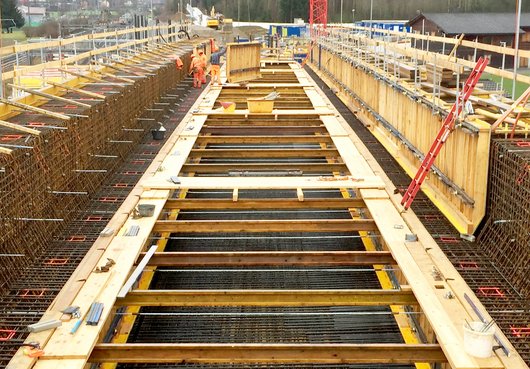

Safety and monitoring
The entire construction scheme took place during ongoing rail services, which meant the topic of safety was one of great importance to the employer as well as the contractor. Works taking place within a distance of 5m from the rails required a strict safety concept.
Works were carried out under the further supervision of a safety officer appointed by the rail authorities as well as construction-side safety and task force heads. All operations were planned in advance on a weekly basis.
Tight schedule
Works during platform closures such as drainage works or the refurbishment of safety installations could only be carried out at night. These mandatory platform closures had to be planned and submitted in each case six months in advance by the construction site management. After each night shift,
geodetic monitoring of the track bed and signal masts was carried out to assess elevation, displacement and verticality. For larger construction elements and longer time frames, supervision by means of monitoring was established.
Technical data
-
Surface and subsoil removal14.000m³
-
Backfill6.000m³
-
Fill12.000m³
-
Construction concrete7.500m³
-
Foundation layer9.500m³
-
Rolled earth fill (bitumen fill)5.000t
Summary
In this project, PORR once again demonstrated its strength in engineering construction. The greatest challenges arose from avoiding interruption to rail operations, which required extensive documentation of all construction procedures and their implementation, and the high safety requirements
established by the client. Owing in large part to these safety measures and the extensive preliminary works, this entire project has so far progressed without accident, within the time-frame specified and to the complete satisfaction of the SBB.

